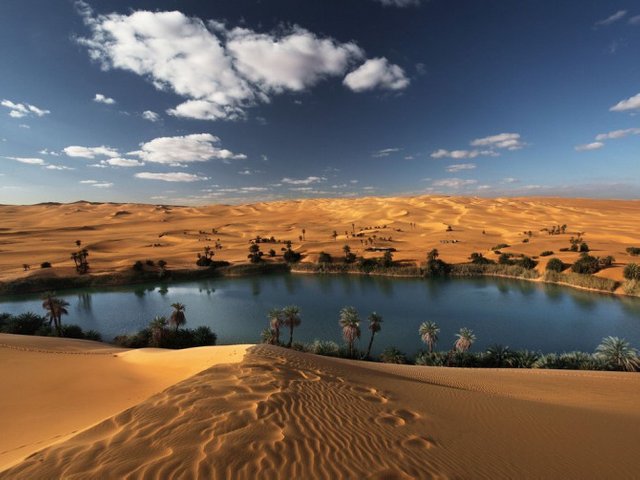A cautionary tale: how Saudi depleted it's water table
You can survive droughts if you have a carefully managed water table. But if you don't manage your water table you end up with no agriculture.
This is the cautionary tale of how Saudi depleted it's water table, leaving it vulnerable when it's money runs out.
About ten thousand years ago, the desert that spans the Sahara and Arabia was lush and green, with plenty of rainfall, much of which percolated down to the water table, where it accumulated.
Then the earth started to make one of it's periodic tilts on it's axis. This shifted where the sun beat down the most, which in turn shifted evaporation and rainfall patterns. The long and short of it is that rain no longer fell either in the Sahara or Arabia (or Mexico which is on a similar latitude), and they turned into deserts.
But the water stored in the water table remained, and sometimes percolated up through fissures in the rock to form oases.

The oases allowed Bedouins and other travellers to water their camels and eke out a life in the harshness of the desert.
Then in the 1970's scientists determined that the acquifer underneath Saudi was so vast it contained as much water as lake Erie. Thrilled by this, the Saudi government gave permission to farmers to dig wells and pump the water. Predictably, they went mad and instead of using the water sparingly to augment the production of drought friendly plants (like date palms), they started to grow water thirsty crops like wheat.
What a miracle, they thought. Wheat growing in the desert! Saudi actually became the world's largest wheat exporter at one point, beating the production from the American prairies.
And then the predictable happened. By 2002 farmers began to notice that the wells were drying up. They kept having to dig deeper and deeper. Worst of all, some of the ancient oases, which had been there for thousands of years, started to dry up.
An alarmed Saudi government asked a man called Elie Elhadj to investigate, and he produced a report called Camels Don’t Fly, Deserts Don’t Bloom: an Assessment of Saudi Arabia’s Experiment in Desert Agriculture.
In it he blamed the unlimited draining of the acquifers by landowners and farmers.
If you don't have rainfall to replenish your acquifer, then unlimited pumping can deplete even an acquifer the size of Lake Erie.
Saudi produced it's last ever wheat harvest in 2016. They now drink desalinated water - and thanks to their oil money, they can afford the expense of desalination. But what happens when the world switches away from oil (as it is steadily doing) and the oil money runs out? Likely a refugee crisis for neighbouring countries. There is no hope of rain, as the planet won't tilt back on it's axis for another ten thousand years.
Despite the horrendous Saudi story, there are other countries busily draining their acquifers.
Spain grows salad for the whole of Europe in it's southern desert, using water from it's acquifer which is not replenished by rainfall. Worse they waste water in their tourist industry too, with water parks, endless shower facilities for those who have gotten sticky on the beach and so on. It's estimated that in Benidorm they use 800 litres per person, compared to the 150 litres per person used in the UK.
And California is also busily draining it's acquifer to grow almonds and other thirsty plants. At least if California runs dry, production of vegetables can shift to the southern states of the USA where there is still plenty of rainfall. Spain by contrast will be stuffed.
In the coming century water will be more precious than oil.
You got a plankton sized upvote from @worksinsane because your post appeared in the We Curate quality post search tool. It is a web art thingy thing that searches posts which fulfill predetermined rules. Upvoting isn't automated, @worksinsane reads posts before upvoting.
For more information read the latest post: https://steemit.com/wecurate/@worksinsane/we-curate-9